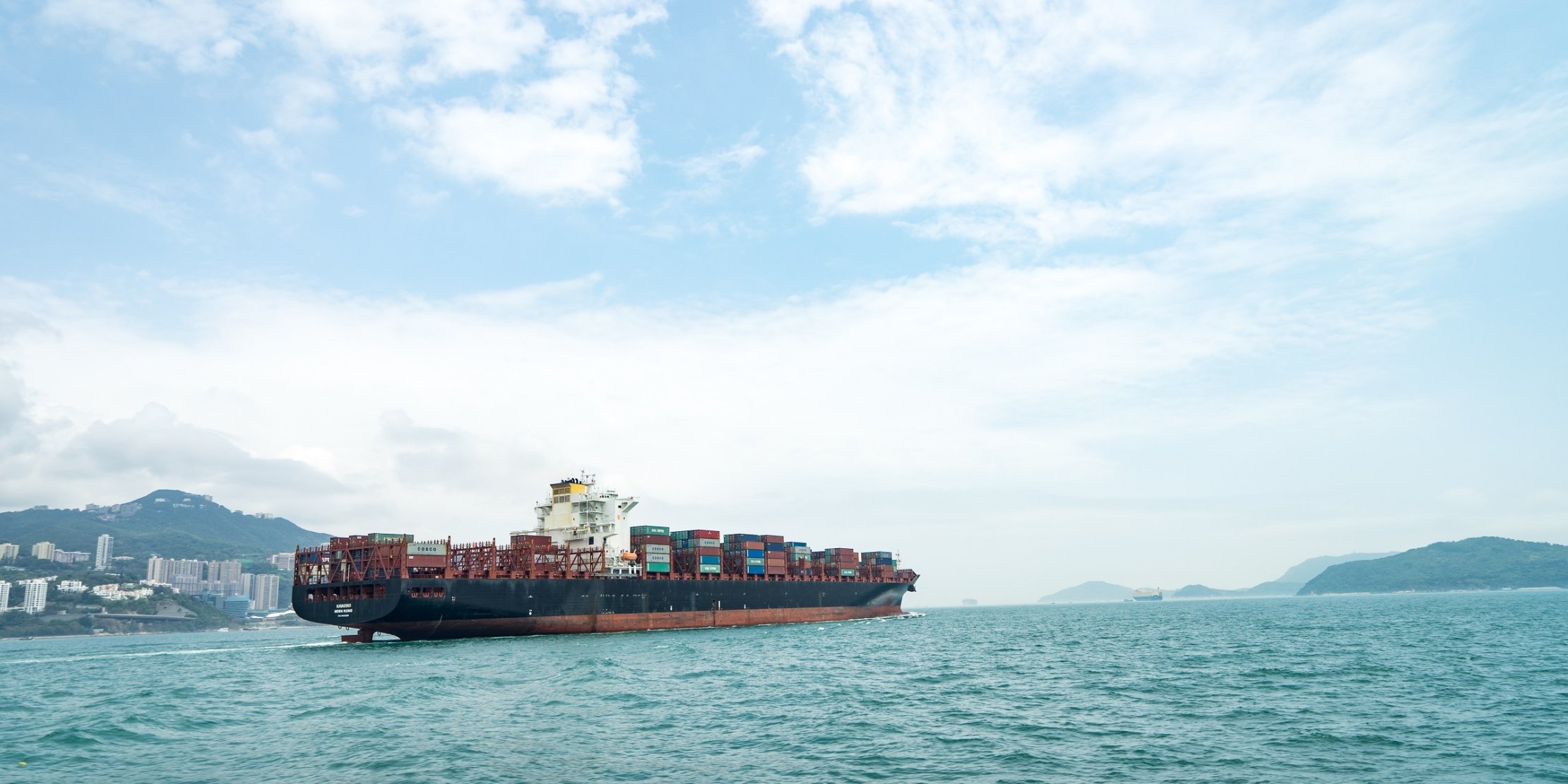- About
- Topics
- Story
- In-Depth
- Picks
- Opinion
- News
- Donate
- Signup for our newsletterOur Editors' Best Picks.Send
Read, Debate: Engage.
About 90 percent of world trade is delivered across the oceans. Not surprisingly, the ecological footprint of maritime shipping is big. But the industry is changing.
Talking to shipping company representatives or other participants in the maritime trade chain these days means experiencing an industry in turmoil. „Only a few days to IMO 2020“ is one of the most widely used phrases.
IMO 2020 is a directive of the International Maritime Organization (IMO), which is due to enter into force in January 2020. These new set of rules require that the sulfur content of marine fuels - previously heavy fuel oil in particular - be limited to 0.5 percent. So far, a limit of 3.5 percent was in force; on average, a share of about 2.5 percent was used.
Sulfur oxides in the air are responsible for acid rain, but also for poor air quality leading to asthma or even premature death. IMO 2020 should reduced by 80 percent.
The potential for reducing pollution in the shipping industry is huge. Carnival Corporation, the world’s largest luxury cruise operator, emitted nearly 10 times more sulphur oxide (SOx) around European coasts than all 260 million European cars in 2017, a new analysis by sustainable transport group Transport & Environment reveals.
The new, more stringent sulfur limitation was not easily enforced against the opposing shipping industry. Because it comes at a cost. The shipping companies basically have three adaptation strategies left:
The installation of "scrubbers" is expensive. And for the global use of alternative propulsion systems in the short term, probably only LPG (Liquified Petroleum Gas) is really an alternative, since there are already some ships using it. But the necessary infrastructure, that is refueling stations, is not yet up to match global demant. In addition, both "scrubbers" and LPG engines require conversions that reduce the loading space of ships.
Therefore, the industry expects that the majority of ship owners will simply use low-sulfur fuels. That should lead to additional costs of 60 billion dollars, as Edmund Hughes, head of Air Pollution and Energy Efficiency at IMO‘s Marine Environment Division, suggests.
The increasing demand for low-sulfur fuels and the resulting increase in prices will also have consequences for other industries. The heavy oil used to date is a residual oil, which is left over from processing crude oil to diesel, gasoline and kerosene. As a result of the additional demand in the shipping industry, the fuels are likely to become more expensive for trucks and airplanes accordingly. Demand (and prices) for heavy oil therefore is expected to shrink. It could then be used cheaper and more extensively in other industries, such as cement production or power generation. Whether this is a sustainable development in the long term remains to be seen.

IMO 2020 is a step in the right direction, says Greenpeace International, but it is far from enough. In fact, the urgent problem of reducing greenhouse gases is not addressed with IMO 2020. The share of tankers, freighters, container ships and cruising vessels accounts for more than 2 percent of the global emissions of greenhouse gases - a similar proportion to aviation. And it is expected to rise in the near future.
"As Arctic sea ice retreats and more ships begin charting previously unreachable ocean, a ban cannot come soon enough.”
Veronica Frank, Greenpeace International political advisor
Not binding enough, not ambitious enough, no agreed timetable for greenhouse gas reductions, and halving them by 2050 is much too late, those are the allegations of numerous environmental NGOs in response to IMO 2050. And which propulsion systems should ensure a complete decarbonization in the near future is completely unclear at present.So the industry's response to the climate crisis is not IMO 2020, but IMO 2050. This agreement aims to reduce greenhouse gas emissions by at least 50 percent by 2050 (of 2008 levels) and, if possible, to achieve complete decarbonisation, ie a reduction in emissions from burning fossil fuels to zero, as soon as possible.
Currently, only LPG seems feasible, but its climate-effecting potential is in question due to its methane content. Methane has a much greater negative impact on the atmosphere than carbon dioxide, albeit degrading faster. And in use it can cause „methane slipping“, when unburnt LPG escapes through a ship‘s exhaust into the atmosphere, wiping out any emission reduction advances.
Test series with battery-powered electric and hybrid engines and with hydrogen-based fuel cells are well advanced. Variants that use methanol or ammonia are also being tested. And also wind power, the oldest of all types of propulsion at sea, is experiencing a renaissance.
The Buckau, the Flettner Rotor Ship, photographed in 1924.
Ship prototypes using towing kites or Flettner rotors are developed. Japanese researchers have even developed a sailing ship that not only uses the power of the wind to propel it, but also produces hydrogen while driving.
And a remarkable trend to revitalize maritime trade with classic sailing ships comes as a speculation on a time when globalization is replaced by localization again, where cheap mass-produced goods are no longer imported from China but produced by domestic 3D printers at home instead - and the remainder part of sea freight is transported with zero emissions by sailing ship.
But, of course, efficiency gains in today's maritime trade also contribute to a relative reduction in emissions. Today's container ships can load up to 20,000 standard containers, twice as many as ten years ago. Norwegian maritime classification company DNV GL, alongside Chinese HudongZhonghue Shipbuilders, have recently announced the construction of a container ship capable of carrying up to 25,000 standard containers, powered solely by LPG.
Even new marine paints, which envelop the hulls of ocean liners with an air cushion, promise a more efficient use of fuels. A coalition of shipping companies announced a few weeks ago to develop a Carbon Capture & Storage alternative that filters and stores carbon dioxide on board. The retained carbon dioxide is turned into dry ice in a cryogenic process. It is then brought ashore and later sunk into the seabed, where it is said to be stored safely and permanently.
And even an introdution of a speed limit for ocean-going ships, as recently suggested by France's President Macron, could almost immediately have a positive effect on greenhouse gas emissions reduction without any need for retrofitting.
Ultimately, the assessment of IMO's climate and environmental efforts is ambiguous. The implementation of IMO 2020 despite considerable resistance from shipowners and logistics companies gives hope for a smoother and consistent implementation of IMO 2050.
However, one question mark remains behind the effects of sulfur limitation on climate. Sulfur in the atmosphere, unlike carbon dioxide, methane and other greenhouse gases, has a cooling effect, wrapping earth like a thin veil, thereby reducing solar radiation. The desperately needed shift towards climate-friendly shipping is therefore likely to depend on achieving the goals of IMO 2020 and IMO 2050 not just as quickly as possible but also as simultaneously as possible.
